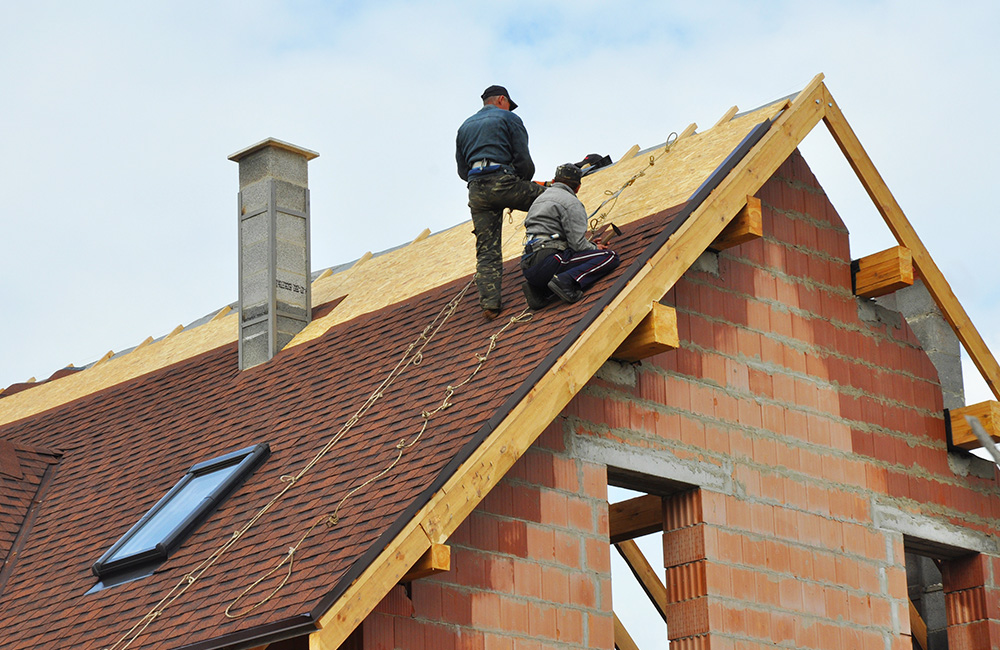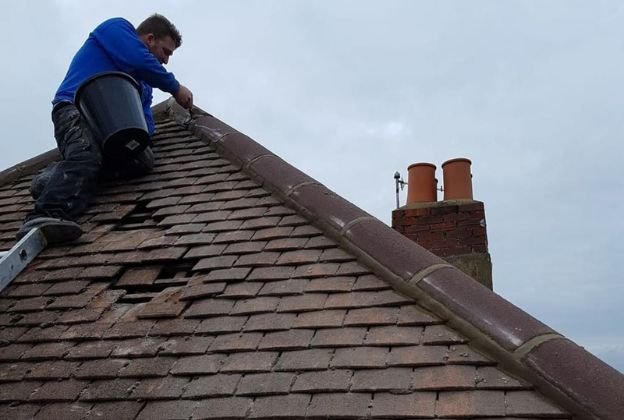Roofing Oahu: Professional Roofing Contractors for Your Oahu Home
Roofing Oahu: Professional Roofing Contractors for Your Oahu Home
Blog Article
Exploring the Various Kinds of Roofings: Which One Is Best for Your Home?
When thinking about the myriad types of roofing systems readily available, it is essential to assess just how each option straightens with your home's special requirements, consisting of environment conditions, visual choices, and structural functionality. From the classic gable roofing that effectively channels rain to the contemporary flat roofing offering metropolitan adaptability, each style presents unique benefits and challenges.
Saddleback Roof
Saddleback roofs, identified by their triangular form and sloping sides, are a preferred option amongst house owners seeking both visual allure and capability. This roofing style successfully enables for efficient water runoff, minimizing the danger of water pooling and succeeding damages. Furthermore, the steep slopes produce ample attic room room, which can be made use of for storage or perhaps transformed into living areas.
Among the main benefits of saddleback roofs is their ability to stand up to severe weather conditions. The style helps in decreasing wind resistance, making them particularly ideal for locations prone to tornados. Additionally, gable roofings can be constructed using a selection of products, including tiles, tiles, and metal, supplying home owners with versatility in layout and spending plan.
From an architectural point of view, saddleback roofs can boost the aesthetic charm of a home, supplying a traditional and timeless look. They can enhance various building styles, from conventional to modern-day designs. Nonetheless, it is important to consider possible disadvantages, such as the vulnerability to snow buildup in cooler climates. Overall, gable roofings continue to be a preferred alternative as a result of their balance of functionality and design, interesting a large range of homeowners.
Apartment Roofs
While typically ignored for more traditional roof covering styles, level roofings supply special benefits that satisfy particular building needs and modern style choices. These roofings are defined by their marginal pitch, allowing for effective use of space, especially in urban atmospheres where maximizing square video footage is crucial.
One considerable benefit of flat roofs is their versatility. They can be used as additional home, such as roof gardens, outdoor patios, or photovoltaic panel setups, enhancing the capability of a home. In addition, level roofings are normally much easier and more secure to browse during maintenance, assisting in repair work and examinations without the challenges posed by steep inclines.
Flat roof coverings can likewise be extra cost-efficient in terms of products and installment. With a less complex layout, they frequently require fewer resources, equating into lower labor prices. Nevertheless, it's vital to think about drain and waterproofing, as level roofing systems can be vulnerable to merging water otherwise properly created.

Hip Roofs
Hip roofing systems stand apart for their stylish design and architectural integrity, making them a prominent selection among homeowners. Identified by slopes on all four sides, hip roof coverings provide a healthy aesthetic that complements numerous building designs - roof repair oahu. The symmetrical nature of these roof coverings helps to distribute weight equally, improving stability and sturdiness
One of the key advantages of hip roofs is their capacity to endure extreme weather problems. The sloped surface areas promote efficient water drainage and snow overflow, decreasing the threat of leakages and structural damage. Additionally, the style reduces wind resistance, making hip roof coverings less vulnerable to wind uplift compared to other roof covering types.


Dropped Roof Coverings
Shed roofing systems, as opposed you can look here to the intricacy of hip roofings, provide a structured and minimalist design that attract contemporary aesthetics. Characterized by a single sloping surface, lost roof coverings are often used in modern design, garden sheds, and various other useful frameworks. This simplicity not only enhances visual appeal however also enables efficient water drainage, making them appropriate for numerous environments.
Among the main benefits of shed roof coverings is their cost-effectiveness. With fewer materials called for and a simple setup process, house owners can conserve both time and money. The layout additionally permits the unification of huge windows or skylights, promoting all-natural light and producing large insides.
However, it is important to think about the possible downsides, including restricted insulation alternatives and the demand for mindful design to avoid extreme warmth build-up. In addition, dropped roof coverings might not mix perfectly with typical style, which could be a worry for some homeowners.
Inevitably, shed roofing systems offer a functional and stylish roofing solution for those looking for modernity and efficiency. When selecting a roofing kind, assessing personal useful needs and aesthetic preferences will direct property owners to the finest option for their one-of-a-kind requirements.
Mansard Roof Coverings
Mansard roof coverings, characterized by their unique four-sided layout, are a characteristic of French style that incorporates elegance with capability. This building style includes 2 slopes on each side, with the reduced slope being steeper than the upper one. The distinct configuration enables for additional home in the upper degrees, making it an excellent selection for house owners looking for to optimize useful location without increasing the structure's impact.
Among the considerable advantages of a mansard roofing is its versatility. It can be adjusted to different building designs, from standard to contemporary, enhancing the aesthetic charm of any kind of home. In addition, the sufficient room developed under the roof covering can quickly accommodate dormer windows, which enable for natural light and ventilation, additional improving the comfort of the living area.
However, potential home owners need to consider the upkeep needs associated with mansard this website roofs. Installment costs might be greater compared to easier roofing system styles due to the have a peek at this website complexity of building.
Conclusion
Each roofing style provides special benefits, such as the performance of gable roofing systems, the contemporary charm of shed roofs, and the stability of hip roofs. Flat roofing systems supply usefulness for metropolitan atmospheres, while mansard roofing systems give extra living space regardless of greater installment costs.
From the timeless gable roof that efficiently channels rainwater to the contemporary flat roofing system offering metropolitan adaptability, each style presents distinctive advantages and challenges (roof repair oahu). In addition, the style decreases wind resistance, making hip roofing systems less at risk to wind uplift contrasted to various other roofing kinds
Lost roofs, in comparison to the complexity of hip roofing systems, offer a minimal and structured layout that charms to modern-day aesthetic appeals. Each roof covering style offers unique benefits, such as the effectiveness of gable roofs, the modern charm of shed roofing systems, and the security of hip roof coverings. Flat roofs offer functionality for urban environments, while mansard roofing systems provide additional living space regardless of higher installation expenses.
Report this page